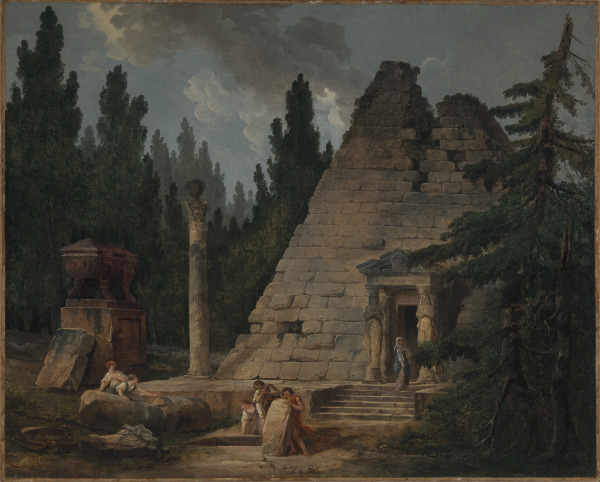
Capriccio with the Pyramid of Maupertuis (Primary Title)
Hubert Robert, French, 1733 - 1808 (Artist)
While completing his apprenticeship at the French
Royal Academy in Rome, Robert became enthralled
with the region’s archaeological sites, where ancient
artifacts had been unearthed throughout the centuries.
In 1765, when he returned to France after a decade in
Italy, the taste for decoration inspired by antiquity was
growing, and his familiarity with these motifs made
him an important figure in the artistic scene in Paris.
Over the course of his career, representations of
recently constructed buildings in the guise of ancient
ruins became a popular trope in Robert’s capricci. This
mature work was inspired by the park of the castle
belonging to the marquis de Montesquiou (1739–1798)
at Maupertuis in the east of Paris. The aristocrat’s
ornate garden included several architectural elements
recalling the ancient world, including a pyramid that
was erected between 1775 and 1780. A subtle play of
fantasy in Robert’s painting transforms the pyramid
into a mysterious sepulcher. The real park becomes
the setting for the artist’s archaeological fiction
wherein a group of peasants unearth the remains
of a tomb in the foreground.
The Jordan and Thomas A. Saunders III Collection
Some object records are not complete and do not reflect VMFA's full and current knowledge. VMFA makes routine updates as records are reviewed and enhanced.

